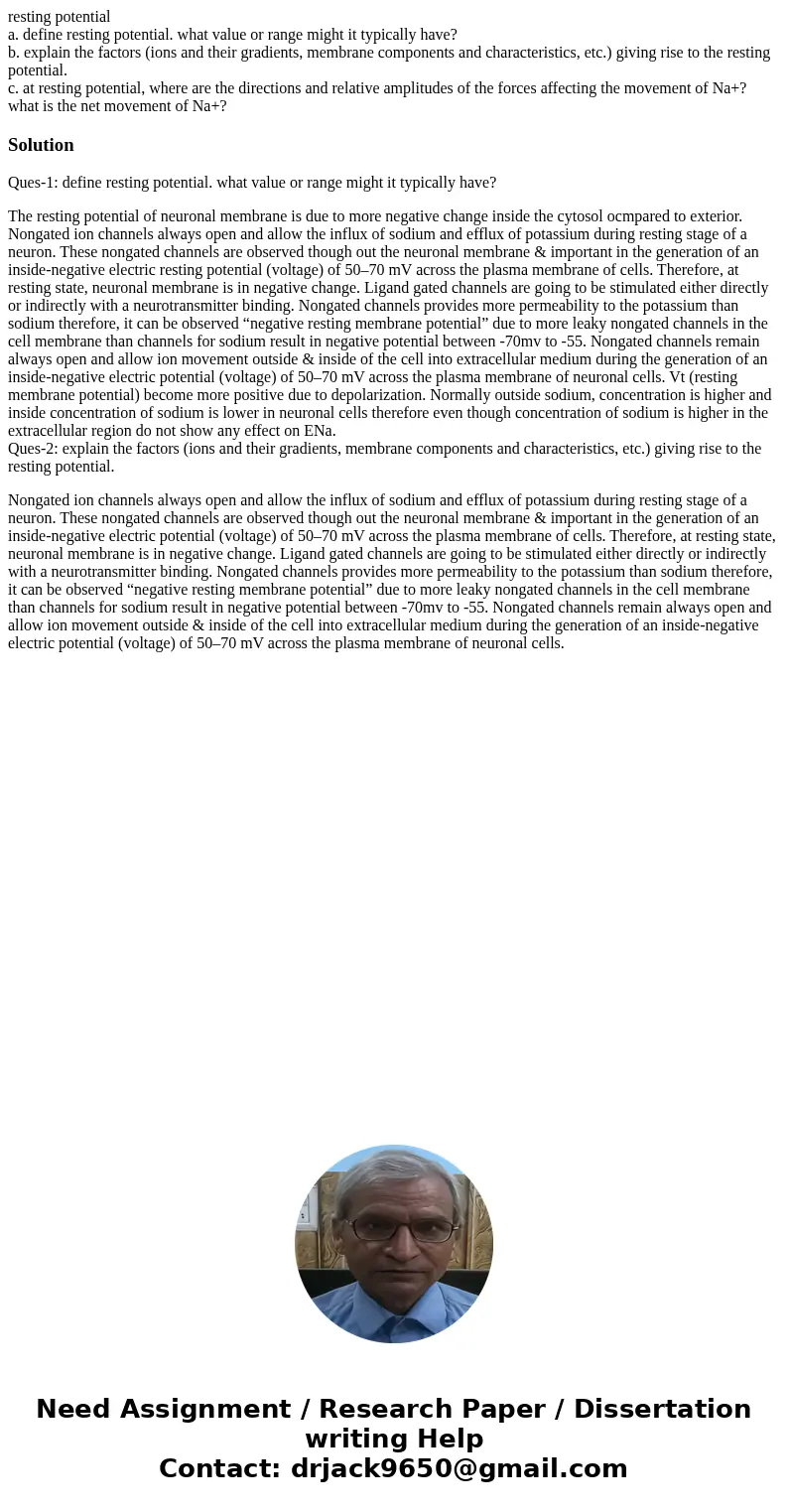resting potential a define resting potential what value or r
resting potential
a. define resting potential. what value or range might it typically have?
b. explain the factors (ions and their gradients, membrane components and characteristics, etc.) giving rise to the resting potential.
c. at resting potential, where are the directions and relative amplitudes of the forces affecting the movement of Na+? what is the net movement of Na+?
Solution
Ques-1: define resting potential. what value or range might it typically have?
The resting potential of neuronal membrane is due to more negative change inside the cytosol ocmpared to exterior. Nongated ion channels always open and allow the influx of sodium and efflux of potassium during resting stage of a neuron. These nongated channels are observed though out the neuronal membrane & important in the generation of an inside-negative electric resting potential (voltage) of 50–70 mV across the plasma membrane of cells. Therefore, at resting state, neuronal membrane is in negative change. Ligand gated channels are going to be stimulated either directly or indirectly with a neurotransmitter binding. Nongated channels provides more permeability to the potassium than sodium therefore, it can be observed “negative resting membrane potential” due to more leaky nongated channels in the cell membrane than channels for sodium result in negative potential between -70mv to -55. Nongated channels remain always open and allow ion movement outside & inside of the cell into extracellular medium during the generation of an inside-negative electric potential (voltage) of 50–70 mV across the plasma membrane of neuronal cells. Vt (resting membrane potential) become more positive due to depolarization. Normally outside sodium, concentration is higher and inside concentration of sodium is lower in neuronal cells therefore even though concentration of sodium is higher in the extracellular region do not show any effect on ENa.
Ques-2: explain the factors (ions and their gradients, membrane components and characteristics, etc.) giving rise to the resting potential.
Nongated ion channels always open and allow the influx of sodium and efflux of potassium during resting stage of a neuron. These nongated channels are observed though out the neuronal membrane & important in the generation of an inside-negative electric potential (voltage) of 50–70 mV across the plasma membrane of cells. Therefore, at resting state, neuronal membrane is in negative change. Ligand gated channels are going to be stimulated either directly or indirectly with a neurotransmitter binding. Nongated channels provides more permeability to the potassium than sodium therefore, it can be observed “negative resting membrane potential” due to more leaky nongated channels in the cell membrane than channels for sodium result in negative potential between -70mv to -55. Nongated channels remain always open and allow ion movement outside & inside of the cell into extracellular medium during the generation of an inside-negative electric potential (voltage) of 50–70 mV across the plasma membrane of neuronal cells.

 Homework Sourse
Homework Sourse